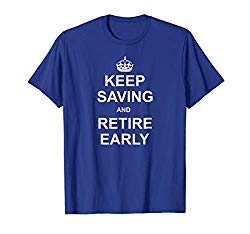College Degree Attainment In America
The Center for American Progress has created a nice interactive map showing the levels of college degree attainment in each of the 3,000+ counties in the United States and Puerto Rico.
If you select a county on the map you’ll see the county’s population, the percentage of residents with an associate’s degree or higher, and the percentage residents with a bachelors degree by race only (not overall).
Darker blue colors have lower college attainment rates, while lighter colors into yellow have higher rates. Additionally, the map has orange dots showing thousands of colleges in the country. You can filter out the colleges with a menu on the left by choosing public, private non-profit, or private for-profit.
If you hover your mouse over one of the college dots you’ll get a popup showing basic information about the college such as how many campuses they have, their enrollment numbers, and their completion rate.
Patterns
An obvious pattern from viewing the map at the country level is the relatively low levels of college attainment in rural locations as compared to more urban areas. Also the south has way less college attainment than the north. There’s a huge noticeable swath of low college attainment in general from Texas all the way up through Appalachia.

The “brunch belt”, or the corridor from Washington D.C. up through Boston and into New Hampshire particularly stands out. Notice the thousands of colleges in that corridor, and the lighter colors indicating higher percentages of people with college degrees.
If you choose the “racial attainment gaps” menu on the left the map changes to showing the attainment gap by percentage points for all counties. In that map dark greens have little to no racial attainment gap, and blue shades scaling to very light blue have higher racial attainment gaps.
The racial attainment gaps seem to be highest in urban areas and the brunch belt, and very low to non-existent in many rural areas. There is also an associated report to go along with the map linked to on the upper right in the white box.
The site only shows overall Associated Degree attainment rates (vice Bachelors). So I poked around and found the highest and lowest in the country.
The county with the highest overall rate of associates degree attainment – Los Alamos, New Mexico – 75%
The county with the lowest overall rate of associates degree attainment – Kusilvak, Alaska – 7%
Geoarbitrage
As a geographer by trade, geoarbitrage interests me as a future desire in retirement, but also as a topic to explore with data. And of course it’s a great strategy to help accelerate your journey to financial independence.
If part of your geoarbitrage strategy is to live in a location with lots of colleges or that has a high percentage of people with college degrees, resources like this are invaluable.
Also be sure to check out my Geoarbitrage Resources Page that has tons of great tools to help you find your perfect location.
I hope to continue to research various aspects of finance as related to geography going forward. And I certainly hope you find these kinds of posts helpful.











































Nice graphic. We like living near a college. There’s more energy. Lots of young people walking around. It’s nice.
I agree, but I also am inclined to think that I give off energy to young college kids 🙂
i wouldn’t mind living near one college with no football team just for the eye candy as i get old. plus it’s nice to be able to take a class or something and get access to some facilities. faculty pickup basketball is fun and those folks are old and slow like me.
haha, you’re gonna trigger someone with a comment like that. And eye candy is good at any age, not just when you’re old.
I now feel educated because of where I live. Fun map. It is interesting that the counties I’ve visited and liked the most also are more educated overall. Only part of the equation of course but still a part.
That’s why I do posts like this, they’re all part of the “location equation”
Very interesting data Dave!
I suspect there is also a geographic correlation for “life long learning” for those located near colleges. Many institutions offer continuing education and low cost courses for older folks.
I’m sure there is. Around the D.C. area where I live you can’t spit out the window of your car without hitting a college of some sort or a satellite campus. They’re everywhere.
Interesting. I bet this almost directly correlates with individual income levels.
Personally, I’d like to move to a small college town. Plenty of educated people, but with a small-town atmosphere and lower costs.
If I can get hold of the data behind this I was thinking of doing the analysis with income. I need more time in my day too 😉
Dave, it would be interesting to correlate this with income and health/chronic diseases (i.e. Type 2 Diabetes) and superimpose those data on same map. I am somewhat surprised that with online access to education that the map hasn’t changed much for my Denver area in the last 25+ years that I have lived here. For example, someone in a rural area can complete their online degree without living near an established university. However, the highest educational attainment rates are still centered around the universities. Will this ever change?
I agree, but the site I highlighted here does not give access to the data and I’d have to find a good source. It’s probably out there.
As for remote degrees, I agree and more and more people are obviously getting them. But what’s likely happening is that after they get their degree they’re forced to go to a big city to get a good knowledge-based job. Many companies allow remote work, but I read an article recently saying the “remote work revolution” hasn’t really come to fruition as planned, for various reasons.